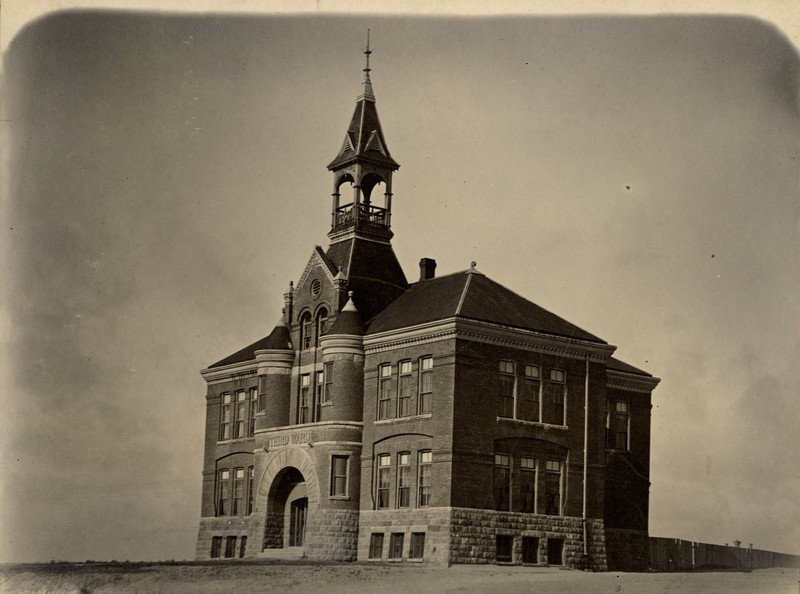Boot Hill
Introduction
Text-to-speech Audio
Boot Hill was a cemetery on the highest hill in Dodge City which contained the graves of those who “died with their boots on.” These graves were largely filled by those who died violently and in gunfights. This cemetery was fairly short-lived, and the bodies were moved to Prairie Grove Cemetery in 1878, and then subsequently to Maple Grove Cemetery in 1889. Numerous buildings have been built on Boot Hill since 1878, including two schoolhouses and a city administration building, constructed in 1928. This building still stands today, and currently houses the Boot Hill Distillery.
Images
Third Ward School

Backstory and Context
Text-to-speech Audio
Boot Hill is a historic cemetery in Dodge City, known for its graves of those who “died with their boots on” – usually referring to those who died in gunfights or murders, and who had no means or friends to ensure a more respectable gravesite. Most of those buried at Boot Hill were buried without coffins, wearing the clothes which they had died in. The first murder in Dodge City, as recalled by both George M. Hoover and Richard M. Wright, occurred in front of Beatty & Kelley’s Saloon, where a black man named Black Jack, or Tex, was shot by a gambler named Denver. While the exact number of those buried at Boot Hill is disputed, Robert Wright claimed in his memoirs that there were “about thirty persons buried there, all with their boots on and without coffins.” Those bodies were moved to Prairie Grove Cemetery in 1878, and were moved again to Maple Grove Cemetery in 1889, where they remain today.
Soon after the bodies were moved from Boot Hill, began construction there and was completed in 1880. Eager to put these "wicked” times behind them, newspapers such as the Dodge City Times treated this as symbolic of Dodge City’s quick development from lawless frontier to a more civilized community. This schoolhouse was replaced in 1890 by the much larger Third Ward School, which stood until 1927. This larger schoolhouse was replaced by a new municipal building, which still stands today, and is currently occupied by Boot Hill Distillery.
Sources
Vestal, Stanley. Queen of Cowtowns: Dodge City, "The Wickedest Little City in America," 1872-1886. New York, New York. Harper & Brothers, 1952.
Wright, Robert M. Dodge City, The Cowboy Capital and the Great Southwest . Dodge City, Kansas. 1913.
Young, Fredric R.. Dodge City: Up Through a Century in Story and Pictures. Dodge City, Kansas. Boot Hill Museum, 1972.
https://kansasheritagecenter.omeka.net/items/show/165
